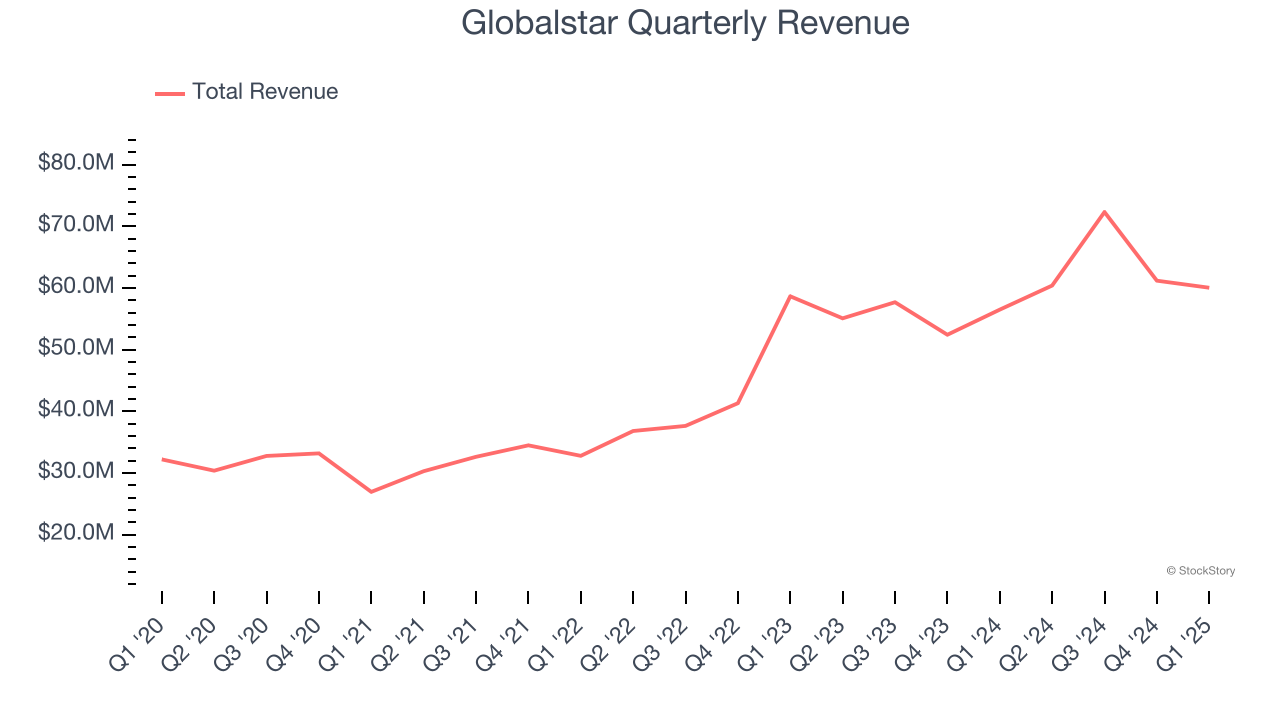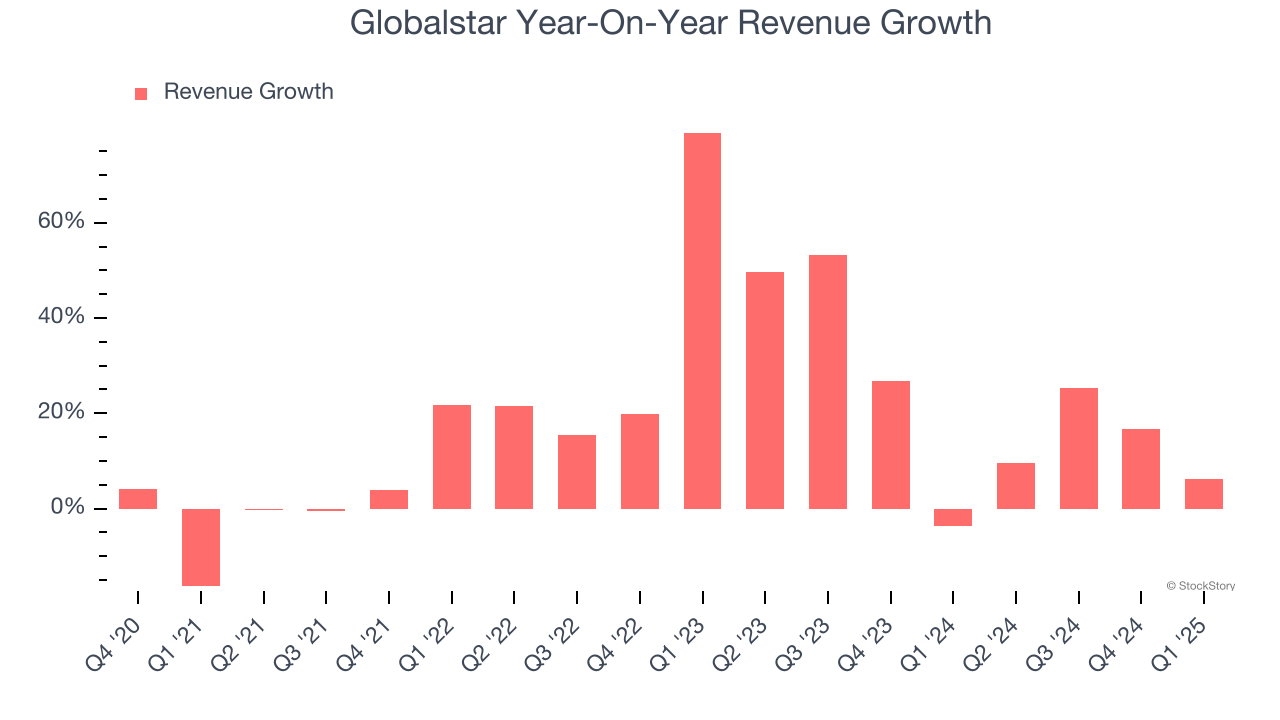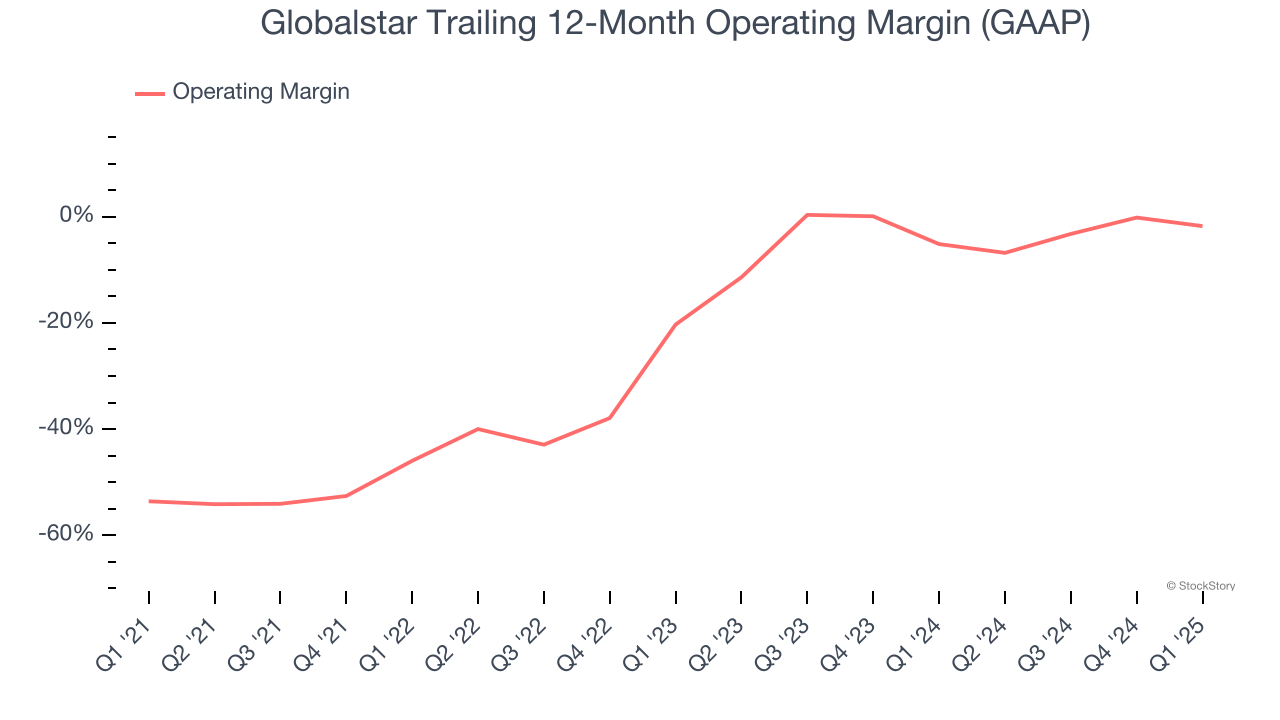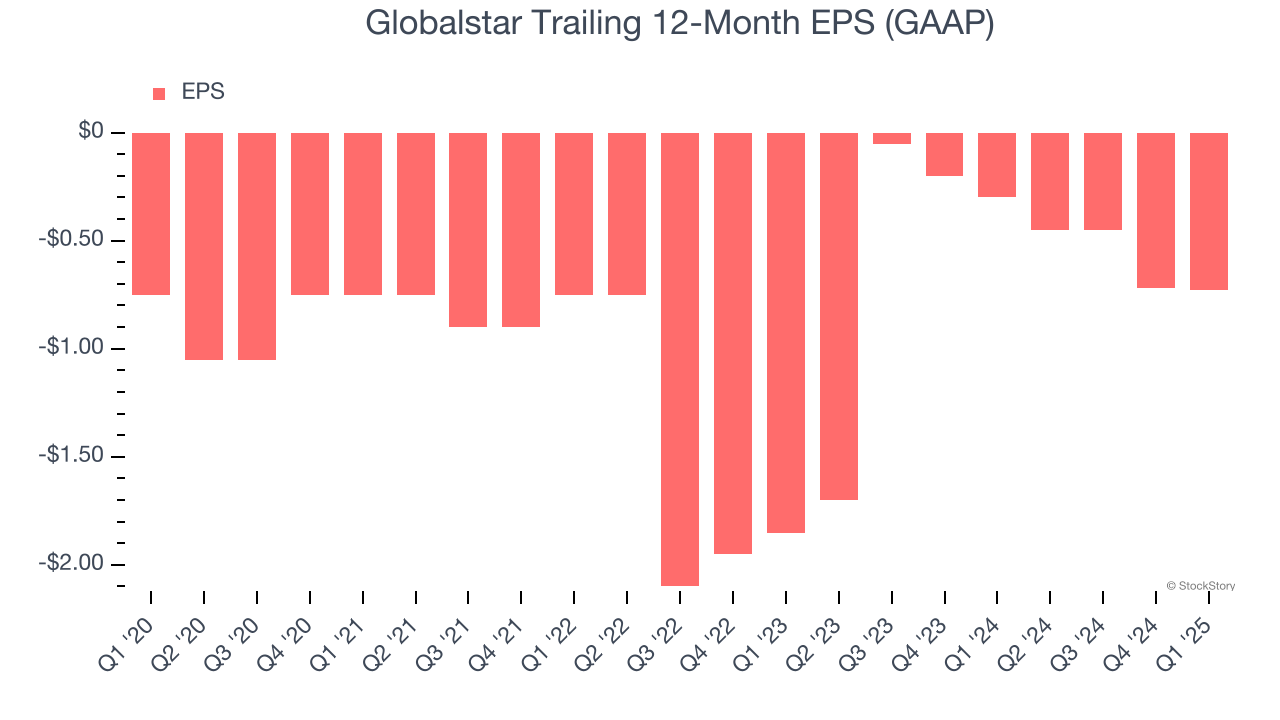
Satellite communications provider Globalstar (NASDAQ:GSAT) missed Wall Street’s revenue expectations in Q1 CY2025, but sales rose 6.3% year on year to $60.03 million. On the other hand, the company’s full-year revenue guidance of $272.5 million at the midpoint came in 3.1% above analysts’ estimates. Its GAAP loss of $0.16 per share was significantly below analysts’ consensus estimates.
Is now the time to buy Globalstar? Find out by accessing our full research report, it’s free.
Globalstar (GSAT) Q1 CY2025 Highlights:
- Revenue: $60.03 million vs analyst estimates of $63.83 million (6.3% year-on-year growth, 5.9% miss)
- EPS (GAAP): -$0.16 vs analyst estimates of -$0.03 (significant miss)
- Adjusted EBITDA: $30.35 million vs analyst estimates of $31.21 million (50.6% margin, 2.8% miss)
- The company reconfirmed its revenue guidance for the full year of $272.5 million at the midpoint
- Operating Margin: -14.2%, down from -7.8% in the same quarter last year
- Free Cash Flow was $47.56 million, up from -$24.36 million in the same quarter last year
- Market Capitalization: $2.55 billion
Company Overview
Known for powering the emergency SOS feature in newer Apple iPhones, Globalstar (NASDAQ:GSAT) operates a network of low-earth orbit satellites that provide voice and data communications services in remote areas where traditional cellular networks don't reach.
Sales Growth
A company’s long-term sales performance is one signal of its overall quality. Any business can put up a good quarter or two, but the best consistently grow over the long haul.
With $253.9 million in revenue over the past 12 months, Globalstar is a small player in the business services space, which sometimes brings disadvantages compared to larger competitors benefiting from economies of scale and numerous distribution channels. On the bright side, it can grow faster because it has more room to expand.
As you can see below, Globalstar’s sales grew at an exceptional 13.6% compounded annual growth rate over the last five years. This is a great starting point for our analysis because it shows Globalstar’s demand was higher than many business services companies.

Long-term growth is the most important, but within business services, a half-decade historical view may miss new innovations or demand cycles. Globalstar’s annualized revenue growth of 20.7% over the last two years is above its five-year trend, suggesting its demand was strong and recently accelerated. 
This quarter, Globalstar’s revenue grew by 6.3% year on year to $60.03 million, missing Wall Street’s estimates.
We also like to judge companies based on their projected revenue growth, but not enough Wall Street analysts cover the company for it to have reliable consensus estimates. This signals Globalstar could be a hidden gem because it doesn’t get attention from professional brokers.
Today’s young investors won’t have read the timeless lessons in Gorilla Game: Picking Winners In High Technology because it was written more than 20 years ago when Microsoft and Apple were first establishing their supremacy. But if we apply the same principles, then enterprise software stocks leveraging their own generative AI capabilities may well be the Gorillas of the future. So, in that spirit, we are excited to present our Special Free Report on a profitable, fast-growing enterprise software stock that is already riding the automation wave and looking to catch the generative AI next.
Operating Margin
Globalstar’s high expenses have contributed to an average operating margin of negative 19.6% over the last five years. Unprofitable business services companies require extra attention because they could get caught swimming naked when the tide goes out.
On the plus side, Globalstar’s operating margin rose by 51.8 percentage points over the last five years, as its sales growth gave it operating leverage. Still, it will take much more for the company to reach long-term profitability.

This quarter, Globalstar generated a negative 14.2% operating margin.
Earnings Per Share
We track the long-term change in earnings per share (EPS) for the same reason as long-term revenue growth. Compared to revenue, however, EPS highlights whether a company’s growth is profitable.
Globalstar’s full-year EPS was flat over the last five years. Its performance was underwhelming, but at least the company is doing well in other parts of the business.

In Q1, Globalstar reported EPS at negative $0.16, down from negative $0.15 in the same quarter last year. This print missed analysts’ estimates. We also like to analyze expected EPS growth based on Wall Street analysts’ consensus projections, but there is insufficient data. This signals Globalstar could be a hidden gem because it doesn’t have much coverage among professional brokers.
Key Takeaways from Globalstar’s Q1 Results
It was great to see Globalstar’s full-year revenue guidance top analysts’ expectations. On the other hand, its revenue, EPS, and EBITDA missed. Overall, this was a weaker quarter. The stock traded down 3.6% to $19.45 immediately after reporting.
Globalstar underperformed this quarter, but does that create an opportunity to invest right now? If you’re making that decision, you should consider the bigger picture of valuation, business qualities, as well as the latest earnings. We cover that in our actionable full research report which you can read here, it’s free.
